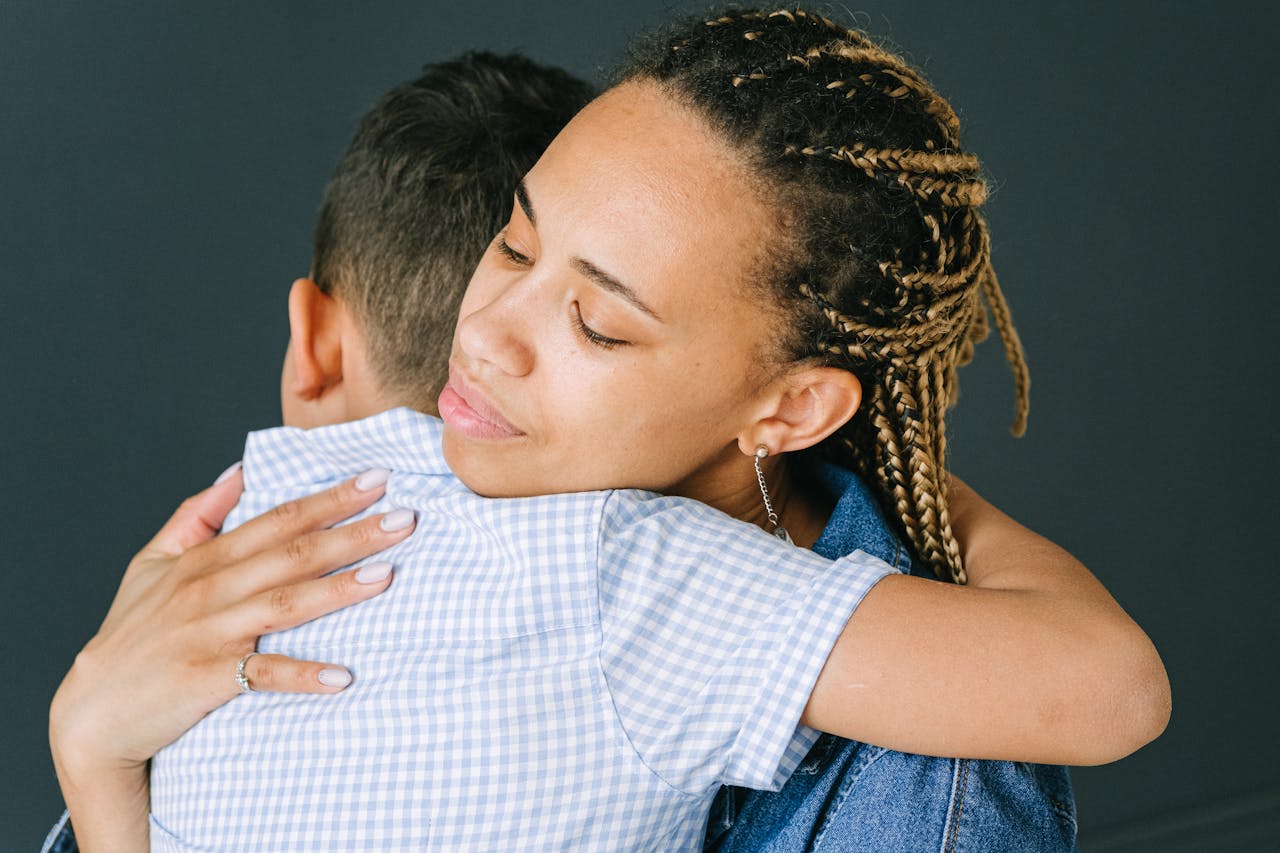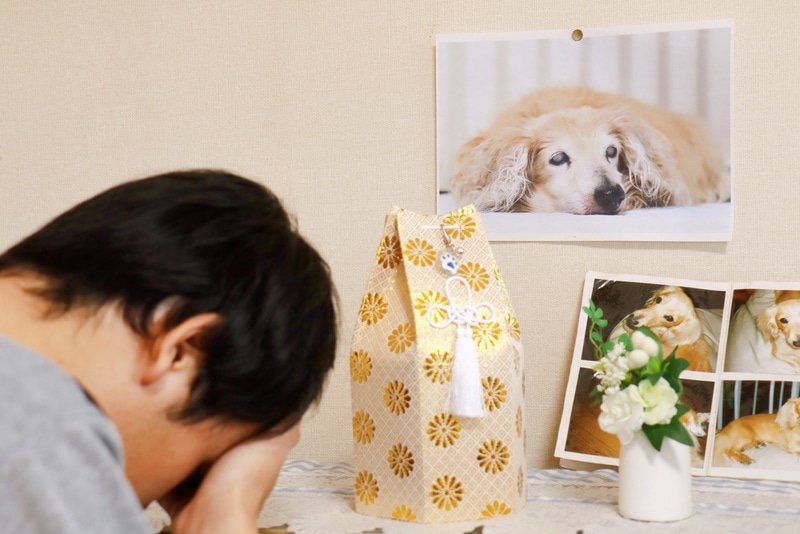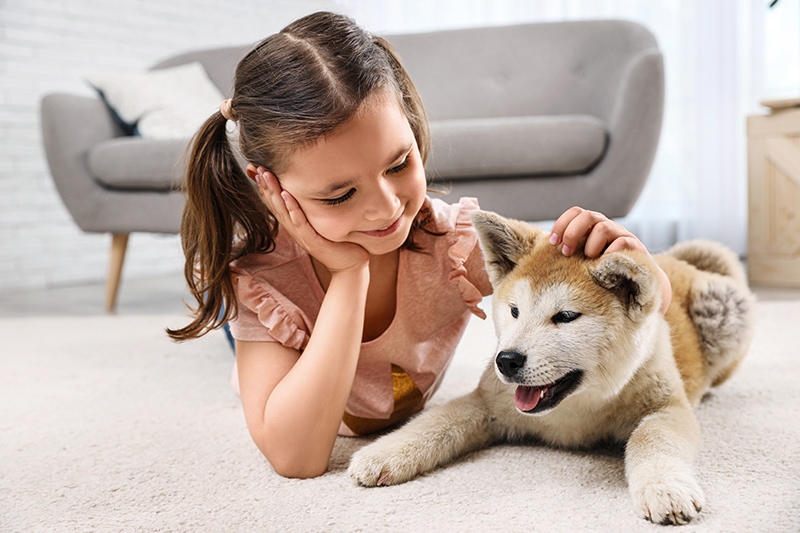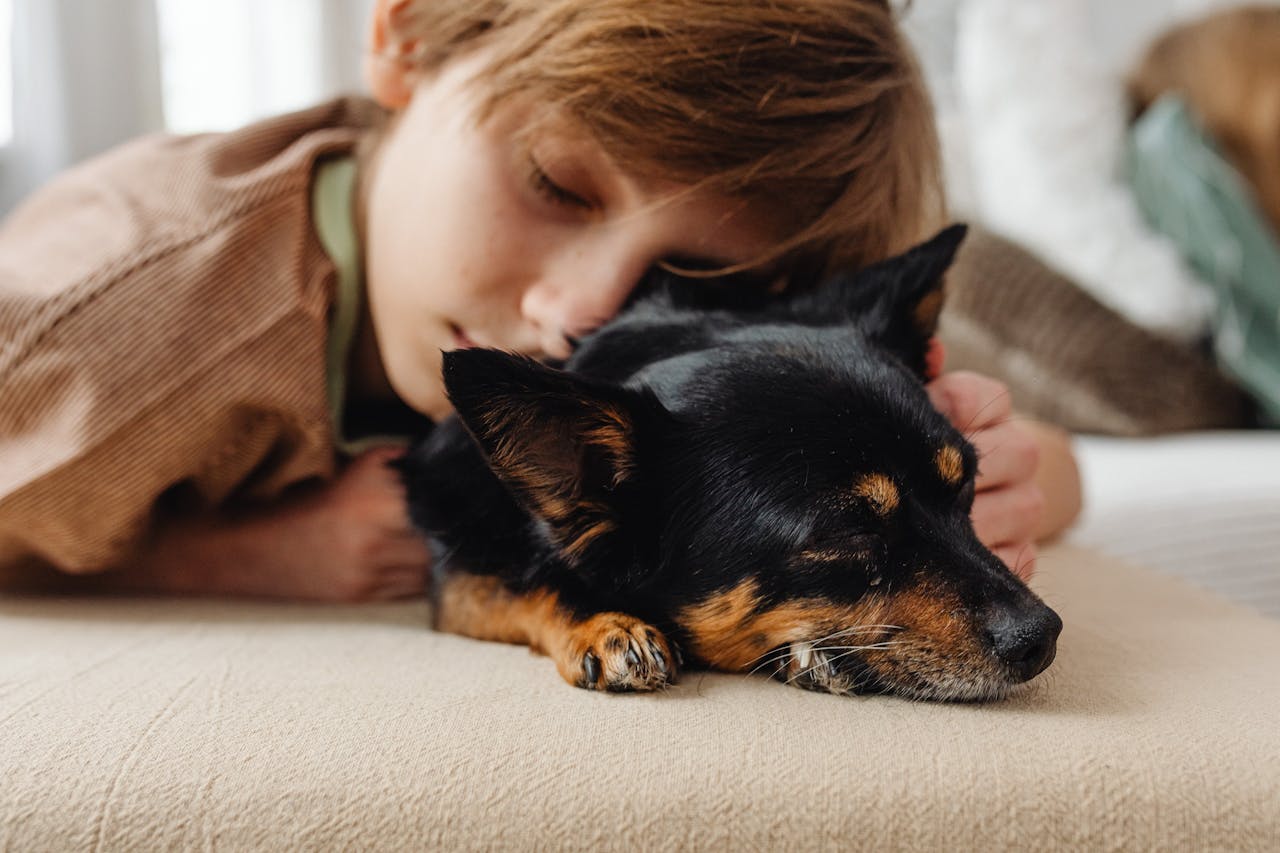As a dog owner, you know that your time with your beloved pet will one day come to an end. If you’re a parent, the loss of a dog can be even harder because you’ll also need to help your child deal with their pet’s death. In this article, we’ll discuss six caring ways to help children cope with the death of a dog.

The 6 Ways to Help Children Cope With the Death of a Dog
1. Choose Your Words Carefully
Finding the right words to talk to your children about the death or impending death of a dog can be tricky. Try to tell your child the truth about what’s happening using age-appropriate language.
Don’t use phrases like “put to sleep” because they may confuse or frighten young children. Avoid placing blame for the death of the dog or saying they ran away. If your child starts asking hard questions about death or what happens when we die, be honest, even if that means telling your child you don’t know.
If you lie to your child, even to spare their feelings, it could damage their trust in you one day when they discover the truth.

2. Find Resources That Can Help
Your vet or pediatrician may be able to suggest books about the loss of a pet that can help your child understand what’s going on better. If your dog is dealing with a terminal illness or health condition, you may have some time to prepare your child for their death.
Reading books and discussing the situation can help your child better cope. You can also find additional resources online, such as support groups or pediatric health websites.
3. Don’t Hide Your Feelings
If you’re grieving the loss of your dog, don’t hide your feelings from your child. Allowing them to see you cry, talking about your emotions, and sharing memories of your dog can help your child understand that their feelings are also valid.
Help your child find an age-appropriate way to share their feelings with words or pictures. Grief impacts every child differently, so don’t push your child to share if they aren’t ready. Let them know it’s safe to feel sad and cry.

4. Make the Most of the Time You Have With Your Dog
If you find out your dog’s time is limited, explain the situation to your child and then make the most of the days or weeks you still have with your pet. Give your child time to process and ask questions if they have them.
Let them help you decide how to spend the remaining time with your dog. Maybe you’ll all take a road trip to a favorite location or spend more time at home with them. When it’s time to say goodbye, explain what will happen in age-appropriate language.
Older children and teens may want to be present if you’re euthanizing your dog, but allow them to make that decision. If not, make sure they get closure in another way.
5. Say a Final Goodbye to Your Dog
Saying an appropriate goodbye to your dog can be an important step in the coping process for you and your child. Consider having a memorial service or allowing your child to scatter your dog’s ashes. You can also request from your vet or the crematorial services to collect some of their fur or to make paw prints, as a keepsake for you and your child.
You can also write a poem or prayer to honor your dog or let your child pick favorite photos of your dog for a scrapbook or to frame. If you can bury your dog on your property, let your child help pick the spot or choose one of your dog’s favorite toys or blankets to bury as well. Sharing stories and memories about your dog may help them cope with the loss.

6. Seek Professional Help if Needed
Grieving is a process that can hit a child harder than it does an adult. Depending on their age, your child may show behavioral regressions, such as having tantrums. They may withdraw, have problems at school, or become uninterested in everyday activities for a while.
Nightmares or night terrors may also occur. If these issues continue for a long time or you’re concerned your child is genuinely having trouble coping, you may need professional help. You can talk to your child’s pediatrician about whether a referral to a counselor may be beneficial.

When Should You Get a New Dog?
Although getting another dog can help ease the loss of a previous pet, it’s important not to rush the process. Children need time to grieve and cope with the death of their dog first. Quickly getting a new pet may do more harm by causing the child to think their dog is replaceable and quickly forgotten.
Even if parents are ready for a new dog, it can take kids longer. Wait to start the discussion until your child starts asking about one. Emphasize that the new dog is not a replacement for the one that died but an entirely new family member.


Conclusion
Most parents want to shield their kids from pain and sadness, but unfortunately, it’s not always possible. The best thing you can do to help your child cope with the death of a dog is to be honest, patient, and supportive.
The tips discussed in this article are a good place to start. Allow your child to feel their feelings as much or as little as they want. Most importantly, don’t hide your emotions, and don’t be afraid to ask for help if needed.
See Also:
Featured Image Credit: Karolina Grabowska, Pexels


















